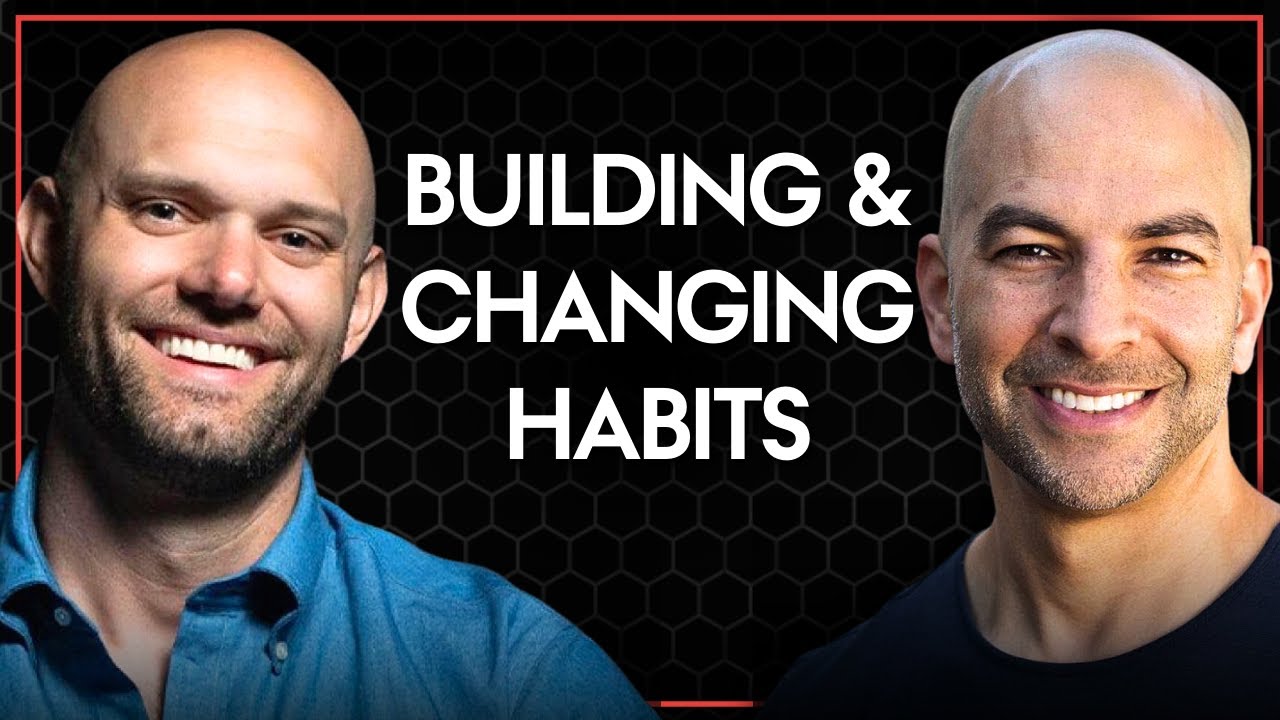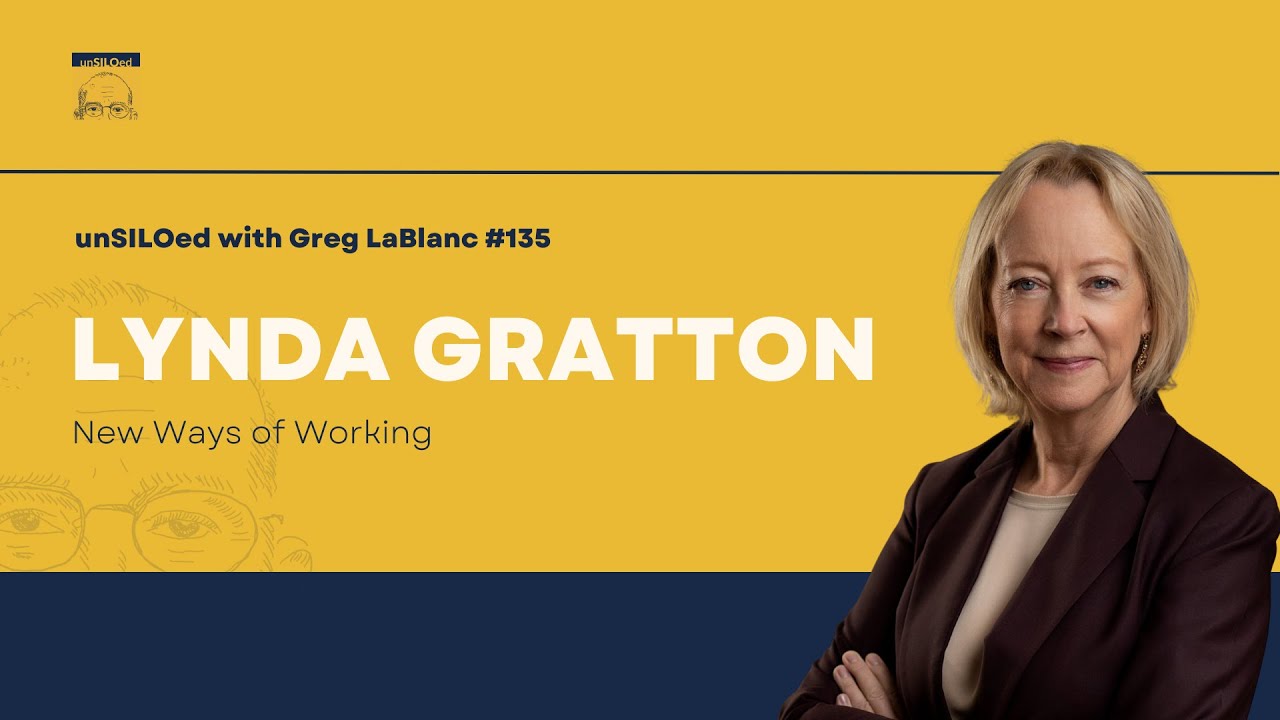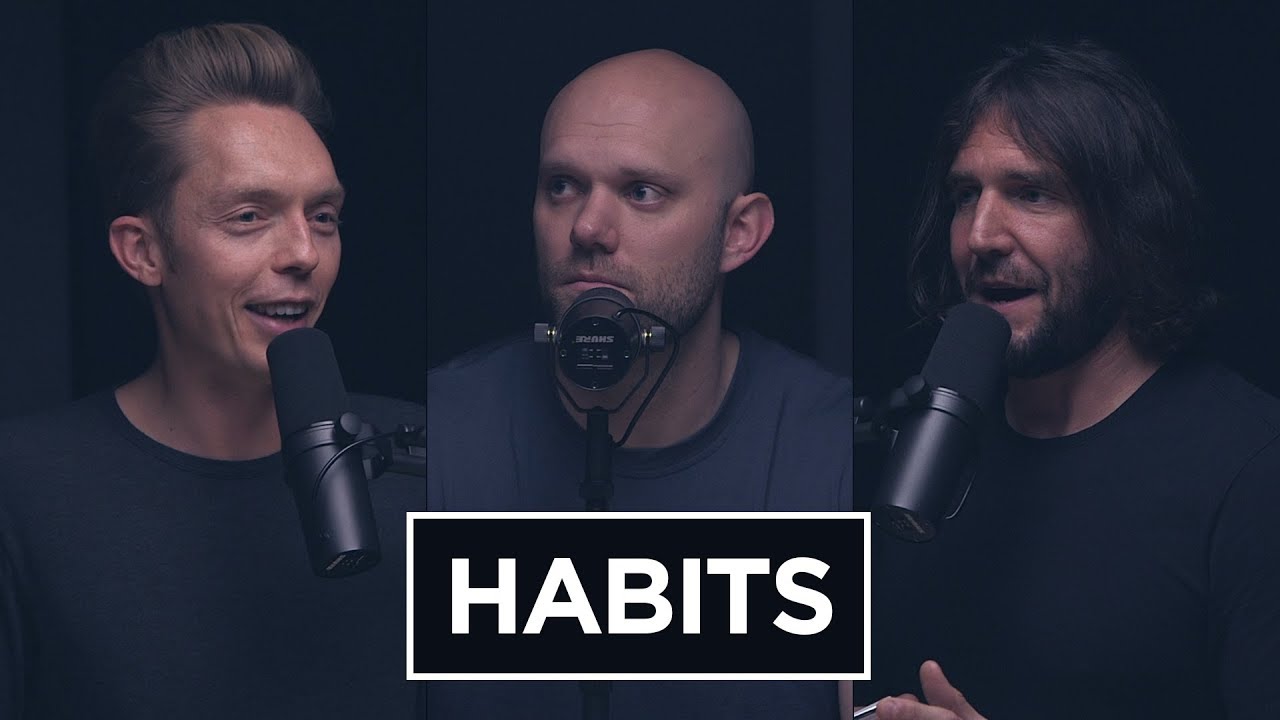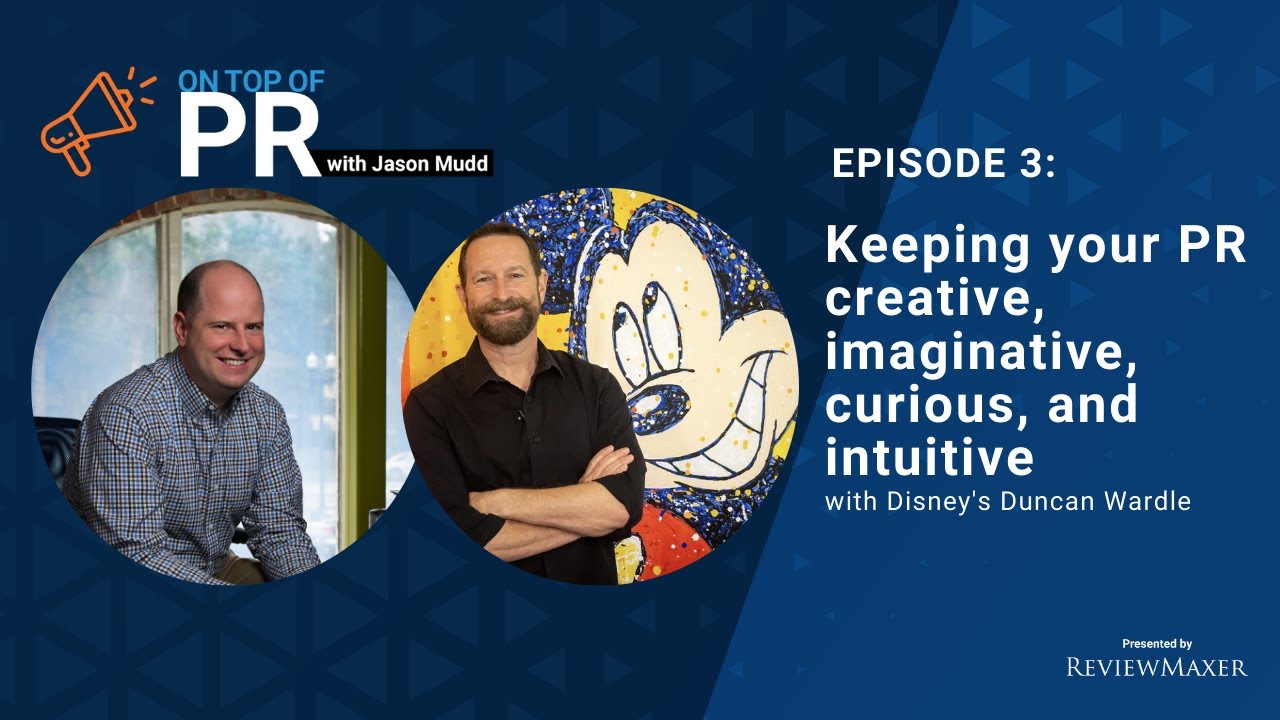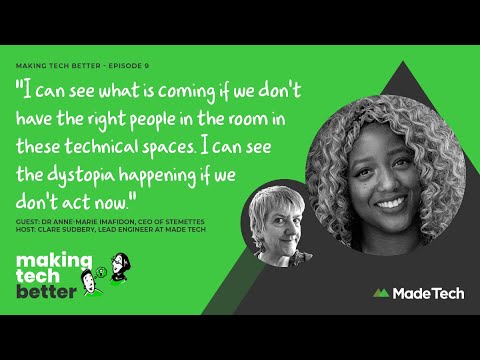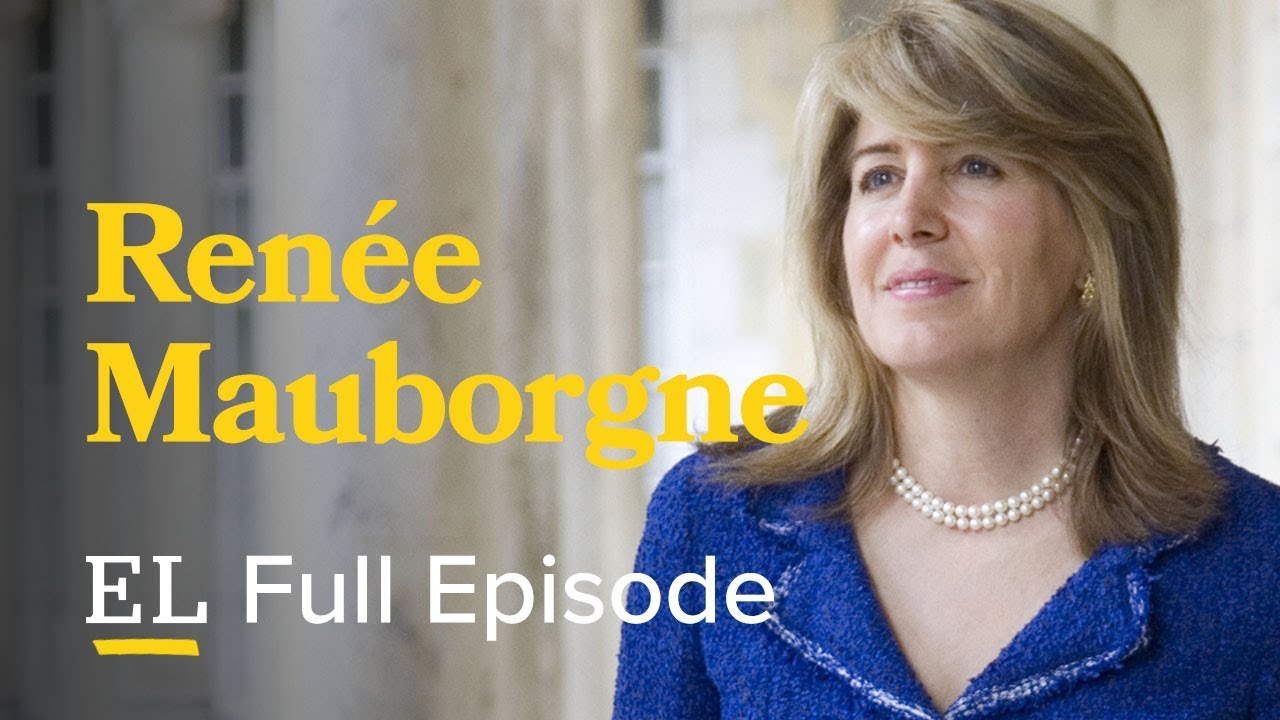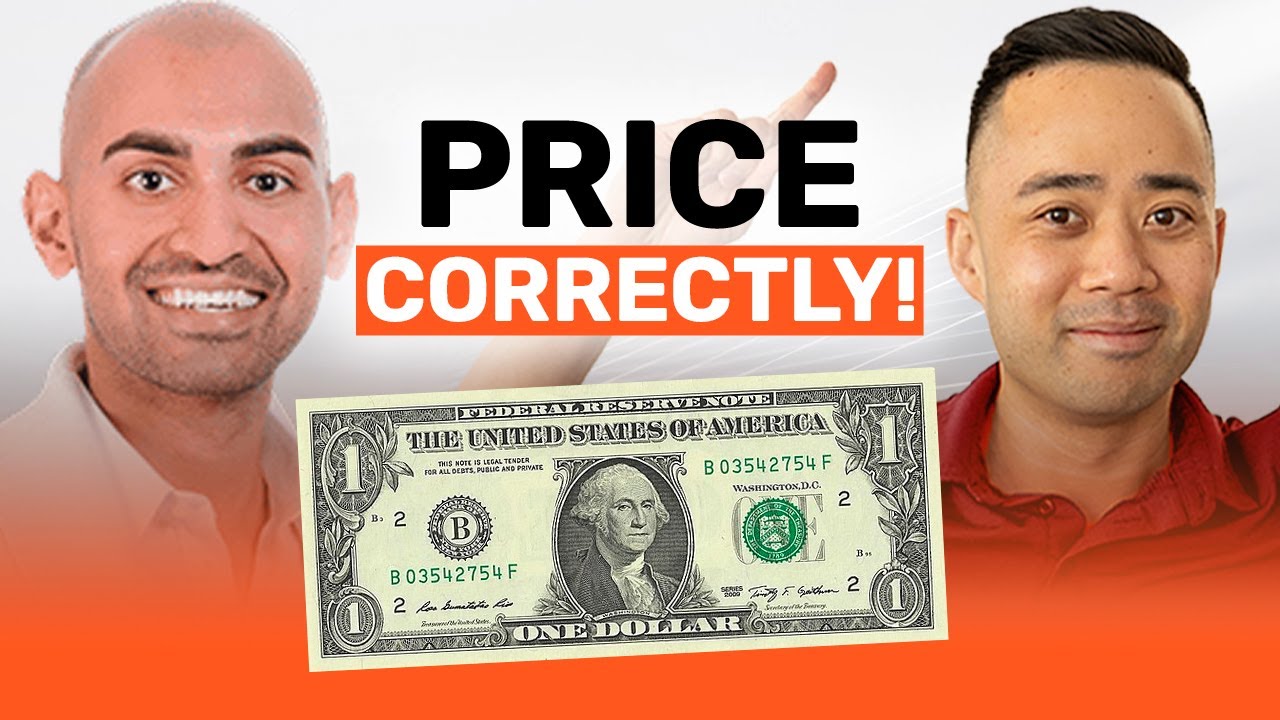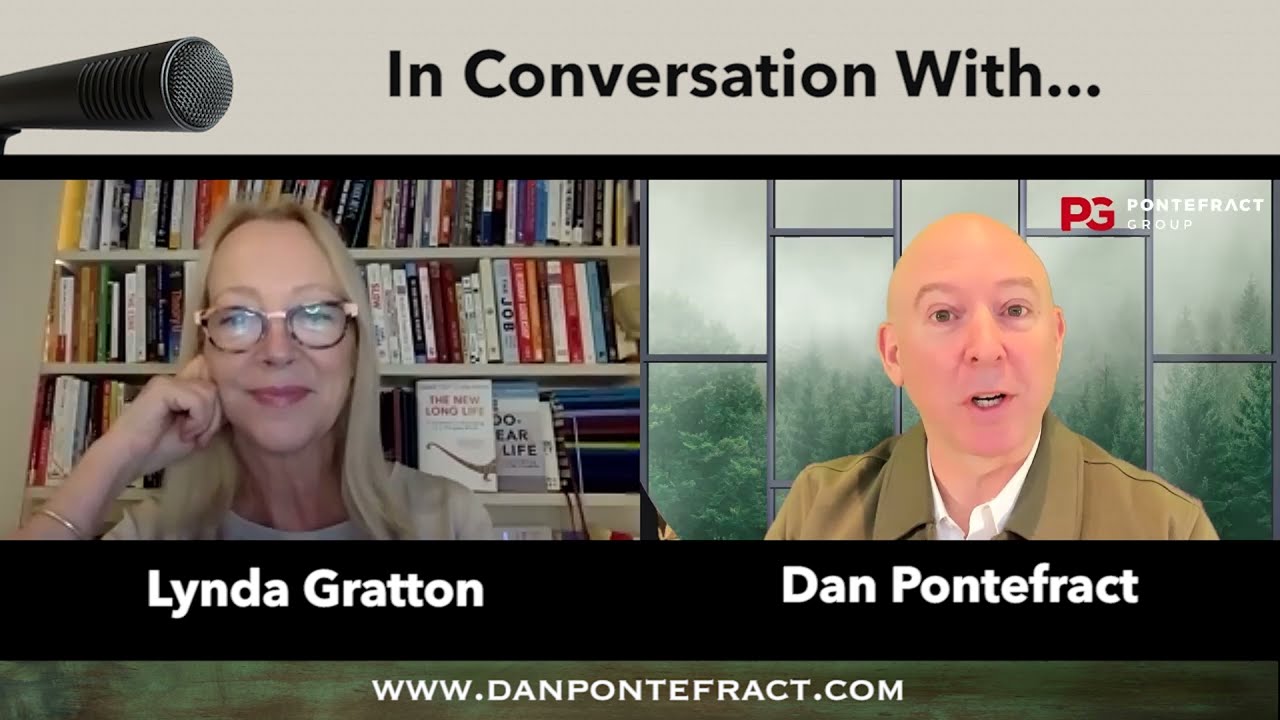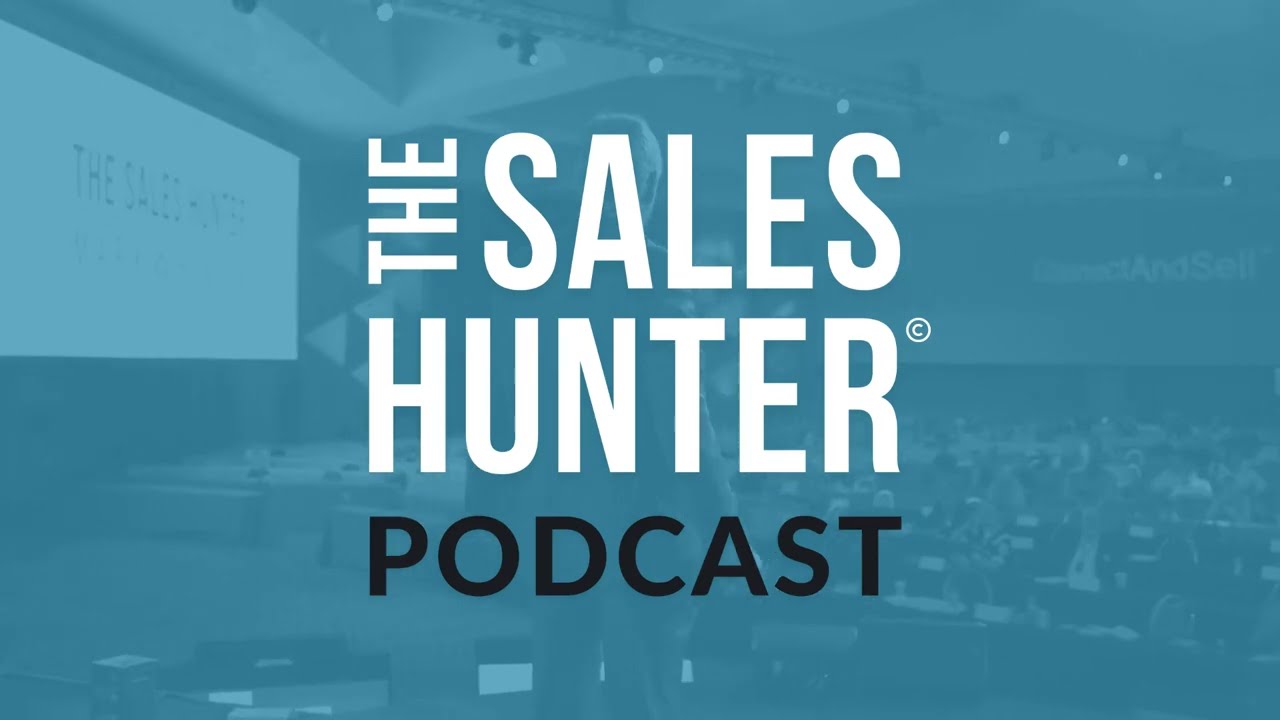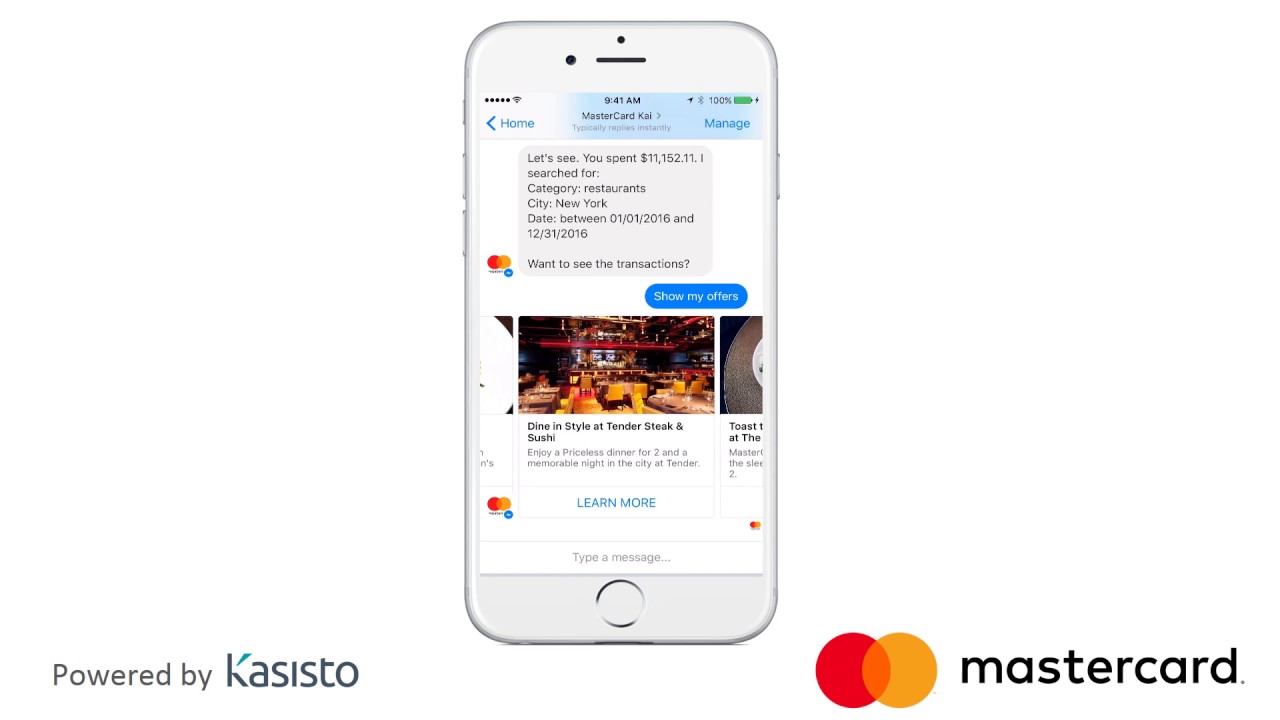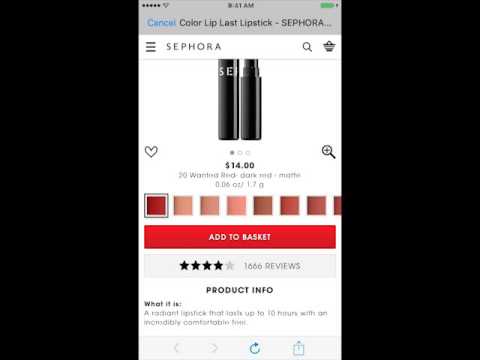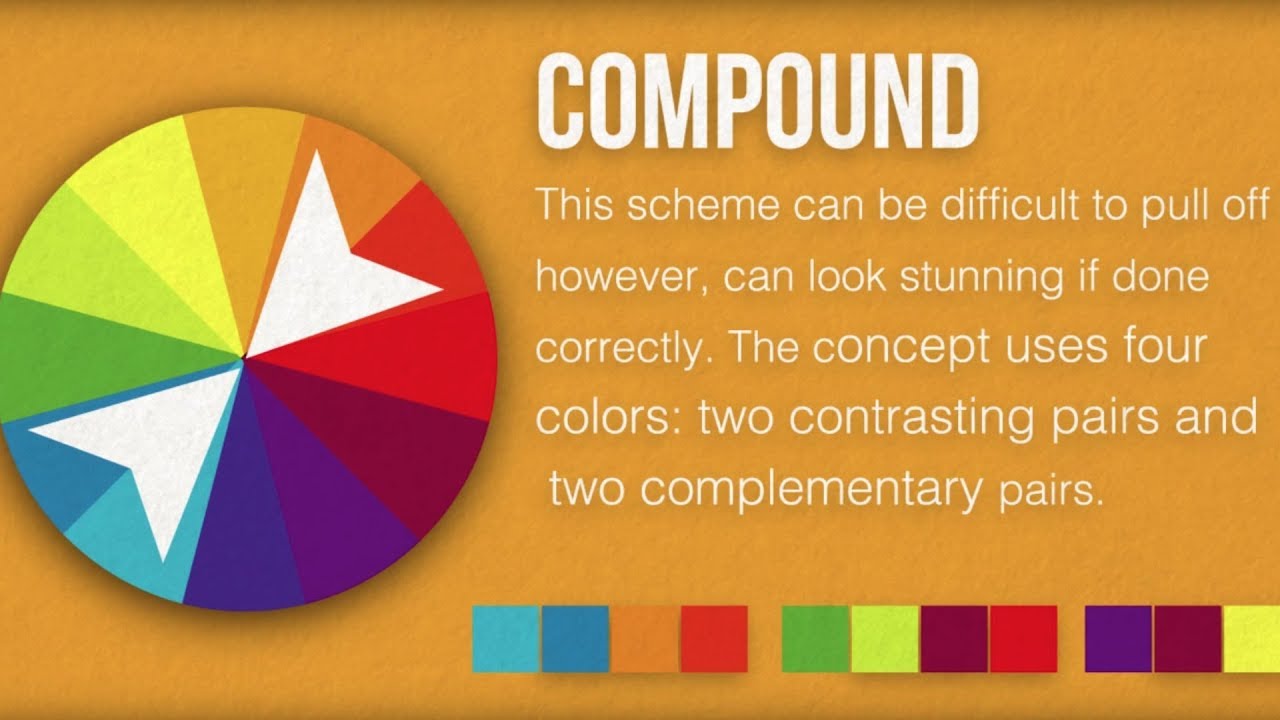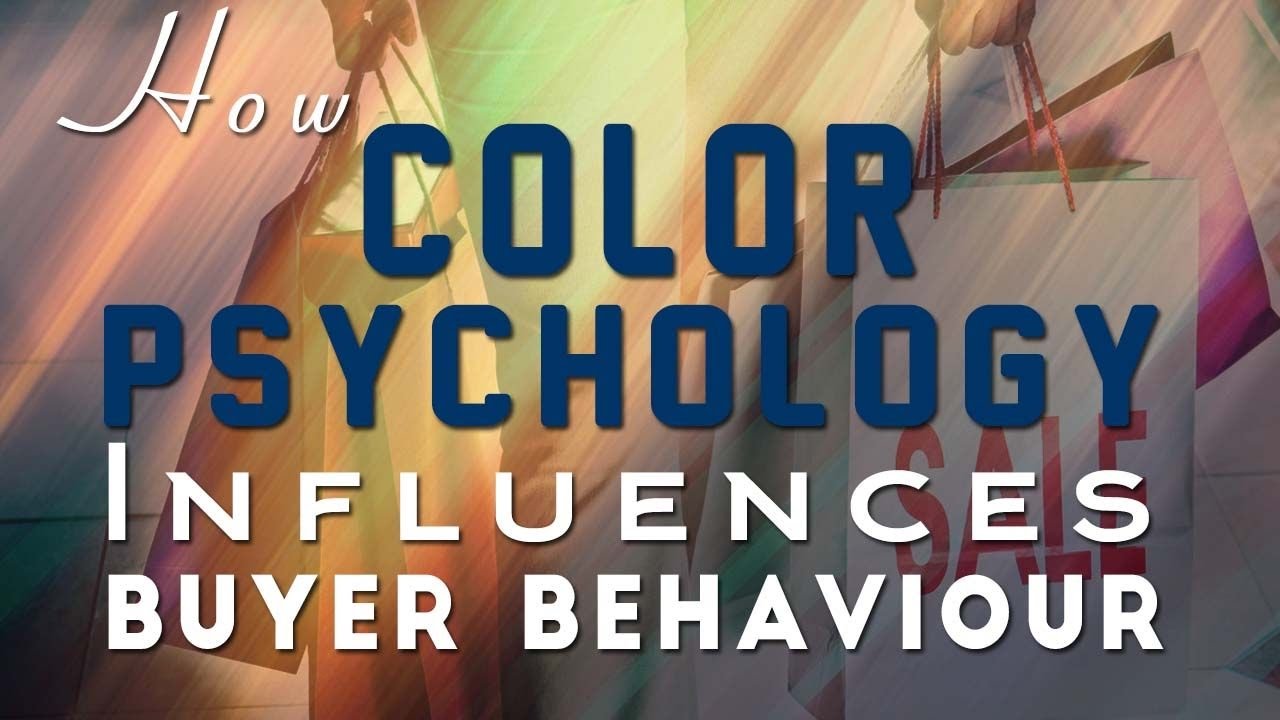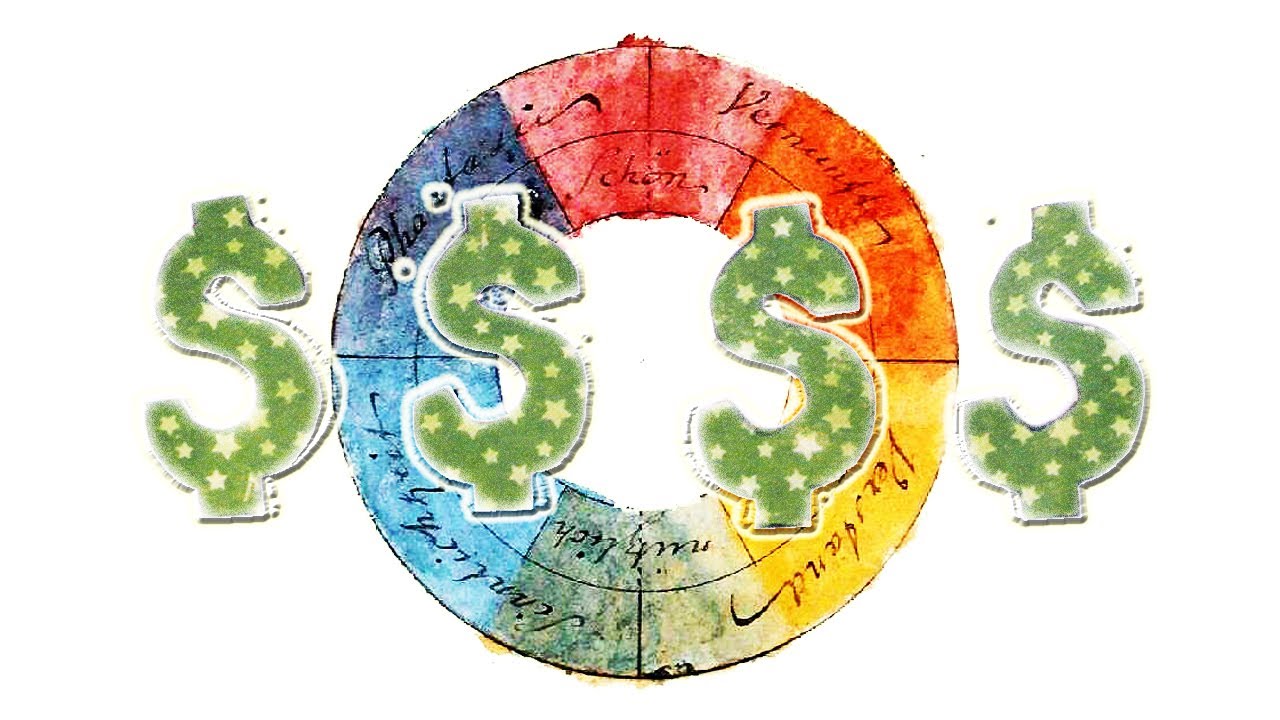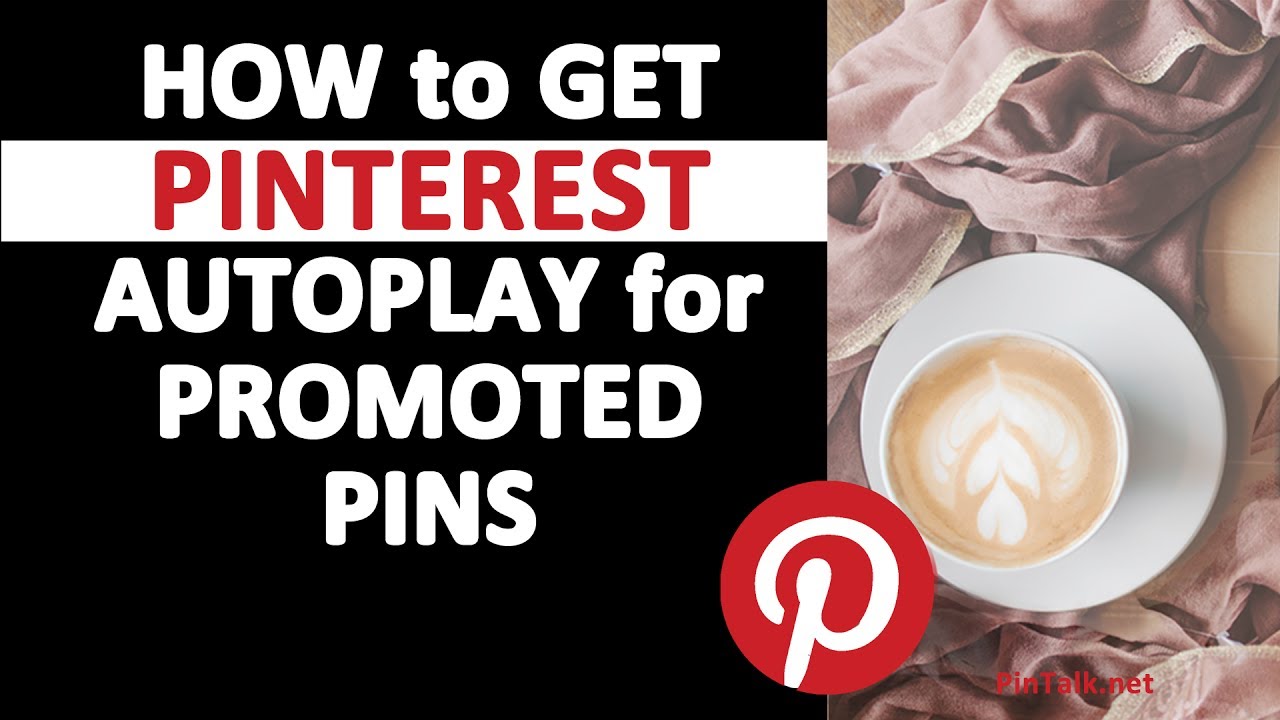18 tactics to close more sales
Looking for tactics to close more sales? Then this article is for you!
18 tactics to close more sales
Sales tactic #1 TALK BENEFITS, NOT FEATURES
Nobody wants to read technical details: how much horsepower, how many inches, how many colours, how many hours etc. Instead, turn those features into benefits for your customer. The smartphone is so slim you can fit it into your shirt pocket. The camera is so powerful you can take a high-resolution photo of Betelgeuse, one of the brightest stars in the night sky. This pair of jeans is so comfortable you can dance the tango in them.
Sales tactic #2 OVERCOME ANY OBJECTIONS YOUR PROSPECTS MIGHT HAVE
Get to know your prospects inside out. Make a comprehensive list of every objection you and your team members have heard from prospects during sales calls and find the right answers to overcome them. They might touch on subjects like price, costs, time to implement your solution, better alternatives and so on. Ask questions to discover the underlying issue. You could start with a price objection (‘It’s too expensive’) and discover, by asking follow-up questions, that a payment instalment plan would solve the objection.
Sales tactic #3 ALWAYS ASK FOR NEXT STEPS
Don’t let the conversation die out; keep talking to the prospect. To this end, never finish your emails with ‘Let me know if you are interested’ or ‘Click here to learn more’. Ask for the next steps. (“Are you free Friday for a quick chat?”).
Sales tactic #4 BECOME AN EXPERT ON PROBLEM-FINDING
For decades, sales professionals focused on providing prospects with the solutions they asked for and striving to show them why their solution was the best. This approach could work in some cases and fail in others. Why? Because prospects are experts in problems, not solutions. Henry Ford: “If I had asked people what they wanted, they would have said faster horses.” Turn from problem-solving to problem-finding. Identify the hidden problems of your customer to help him move forward with the sale.
Sales tactic #5 NURTURE YOUR AMBIVERSION
Ambiversion is a combination of introversion and extroversion. It’s time to get rid of the myth of strong extroverts being better at selling. Sales experts show that the personality type most effective in sales and persuasion is the ambivert. Ambiverts are more effective and better sales professionals because they have the qualities of both introverts and extroverts: they know when to push and when to listen.
Sales tactic #6 MASTER POSITIVE SELF-TALK
Research shows that finding arguments is more powerful and more effective than positive self-affirmations. Shift from positive self-affirmations to positive self-talk by turning it into a question: Can I do this? If so, how?
Sales tactic #7 LIST 1 OR 2 MINOR NEGATIVES
Build credibility and prompt persuasion by listing one or two minor negatives following a list of positives related to your product. This increases transparency and trust. And trust is the stepping stone to closing the sale.
Sales tactic #8 REMOVE FRICTION
If you want your prospect to do something, make it easy, really easy for them to do it. Don’t ask them to go through three pages on the website and five steps before they can see the benefits or the How it works video. Spend less time changing minds and more time making their choices easy to make. Reduce friction by trying to align the easy behaviour with the desired behaviour.
Sales tactic #9 FIND THE RIGHT MOTIVATION
If you know your prospect’s profile by heart, you know the right motivation behind their decision to buy. Position your solution in line with their core motivation. Examples of motivation that you can add to influence people’s behaviour: family, money, status, more time for hobbies or family, career, getting things done faster and easier.
Sales tactic #10 LEVERAGE THE POWER OF WORD-OF-MOUTH
Sales research shows that word-of-mouth has a big impact on behaviour, it generates more than twice the sales of advertising. The goal is not to make a piece of content go viral, it’s to influence one person to tell another person.
Sales tactic #11 ASK ‘WHO DO YOU KNOW THAT I SHOULD KNOW?’
When you realize the conversation with the prospect is not going where it should, end the talk only after asking for a referral with this key question: ‘Who do you know that I should know?’
Sales tactic #12 APPLY SOCIAL CURRENCY CUSTOMER PROFILE-BASED
Social currency refers to the actual and potential resources from presence in social networks and communities, including both digital and offline. What a CEO cares about is different from what a work-from-home parent cares about. So take this into account when drafting your sales pitch.
Sales tactic #13 FIND THE INNER REMARKABILITY
Every product is unique at least in one way or has something surprising, novel or interesting about it. Find the inner remarkability and show it.
Sales tactic #14 USE THE LOSS AVERSION COGNITIVE BIAS
The Loss aversion cognitive bias describes the tendency to prefer avoiding losses to acquiring equivalent gains. Use the loss aversion bias to your advantage by stating what the prospect stands to lose if they don’t make the purchase. It’s powerful and it will surely get the attention of your prospect.
Sales tactic #15 USE THE FRAMING EFFECT COGNITIVE BIAS
The framing effect cognitive bias is when people decide on options based on whether the information is presented from a positive view or a negative view; e.g. as loss or gain. So are prospects attracted to gains if you present them in the correct light? Let’s say you sell enterprise software. Your product is amazingly efficient: it reduces complaints by 95%. How do you showcase this result to gain the prospect’s interest: 95% fewer complaints per month or 95% more satisfied customers per month? As per the framing effect bias, the latter choice is the right one.
Sales tactic #16 USE THE ZERO-RISK COGNITIVE BIAS
Zero-risk bias is a tendency to prefer the complete elimination of one particular risk over options that could eliminate more risks overall. When given the choice between reducing one risk from 5% to 0% or more risks from 55% to 50%, research finds that people go predominantly with the first choice. To benefit from the zero-risk bias approach, present your prospect with two choices. In the first choice, show how your product eliminates one of the prospect’s problems entirely while in the second choice, your product solves a number of your prospect’s pain points by a considerable margin.
Sales tactic #17 BE A FACILITATOR
Become the focal point and hub for connecting others with good contacts and information. When people are looking for something and you happen to know how to connect them with the source of what they’re looking for, you will become a valuable resource to them. There’s no mistake that those people that are able to connect other people with other people not only make great brokers but are also great salespeople.
Sales tactic #18 COLLECT TESTIMONIALS
A good testimonial can prove to be one of the most powerful sales tools you can use. Get them by talking to existing customers and asking them how things are going. When they give you some good information, ask if you can use it for a testimonial. Remember that a good testimonial is a before-and-after description.
Do you want to master your sales game?
Join The Ultimate Sales Strategy MasterCourse™ with Craig Wortmann, Founder & Academic Director Kellogg Sales Institute and CEO Sales Engine!
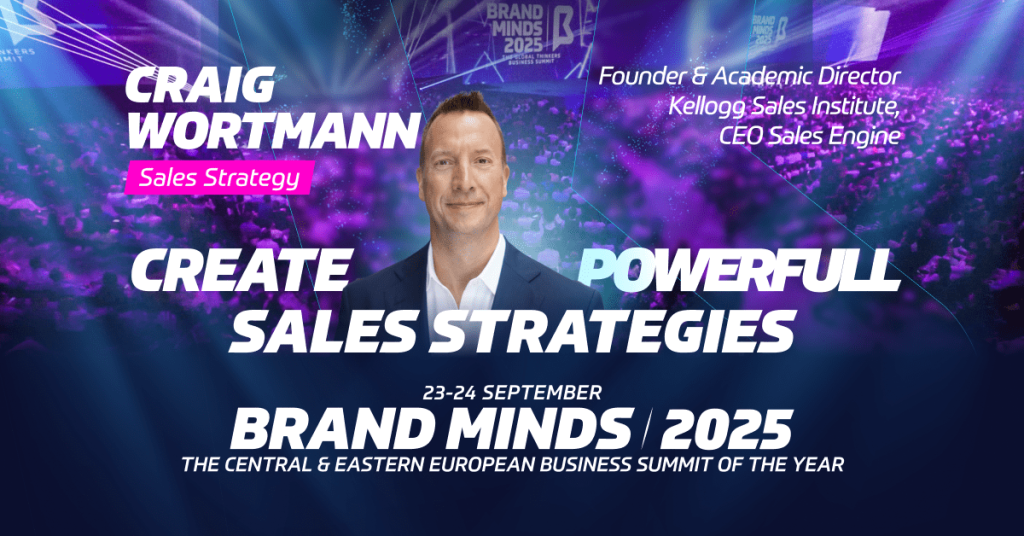
14 talks about top performance & business growth
Are you looking for insights on top performance & business growth?
Here are 14 talks featuring the BRAND MINDS 2023 speakers sharing their insights on habits, the new way of working, technology, marketing, sales, creativity and more.
14 talks about top performance & business growth
Building & changing habits with James Clear of “Atomic Habits”
YouTube Ads: Why is it not working and what to do with Neil Patel
New Ways of Working with Lynda Gratton
What’s Your Blue Ocean Strategy? Make Your Competition Irrelevant with Author Renée Mauborgne
3 reasons why your lookalike audience isn’t converting with Neil Patel
Creating new, empowering habits with James Clear
5 tips to think like a millionaire with Blair Singer
Keeping your PR creative, imaginative, curious and intuitive with Disney’s Duncan Wardle
Nassim Nicholas Taleb on Skin in the Game
Women in Engineering Day with Anne-Marie Imafidon
Move Beyond Competing with Renée Mauborgne
How to build awesome habits with James Clear
How to price correctly with Neil Patel
Why you should redesign your HR strategy with Lynda Gratton
3 sales podcasts to help you crush your sales goals in 2022
If you live and breathe sales and you believe learning never stops, then this blog post is for you.
3 sales podcasts to help you crush your sales goals in 2022
The Predictable Prospecting Podcast hosted by Marylou Tyler
What is the Predictable Prospecting Podcast about?
The Predictable Prospecting Podcast is a reliable and predictable source of information to help salespeople get new potential customers coming into their sales funnel each month.
Marylou Tyler shows how some of the best sales leaders in the industry are creating consistent, and measurable procedures to bring in fresh, qualified leads to their sales funnels each and every month.
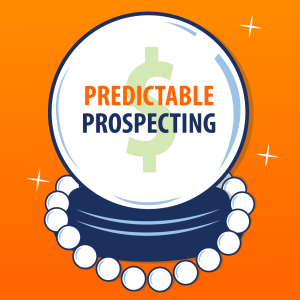
Who is Marylou Tyler, the host of the Predictable Prospecting Podcast?
Marylou Tyler is a lead-generation & sales process expert whose career goes waaaay back before social media, the internet or iPhones.
She has spent the last 30 years perfecting lead generation for top-of-funnel business development & prospecting.

Marylou Tyler
Marylou Tyler is a professor at University teaching sales process & enablement and co-author of
Predictable Prospecting: How to Radically Increase Your B2B Sales Pipeline, a bestseller hailed as a “sales bible” by Inc Magazine.
The book provides readers with a game-changing guide of ready-to-implement strategies necessary to build a solid, sustainable pipeline.
It’s an essential read for sales and marketing executives, team leaders, and sales representatives.
What will you learn by listening to the Predictable Prospecting Podcast?
Here are a few takeaways from Marylou’s podcast:
- What sales representatives are doing wrong regarding selling conversations
- Technology in sales: to automate or not to automate?
- Service is the new sales
- Where is the mindset of sales shifting to?
- How to use social to sell
- Common mistakes in the middle of the pipeline
- Top of funnel gaps and issues
- How to transition to a trusted advisor sale
- The importance of negotiating by looking for a win-win
- The need for slow sales
The Sales Hunter Podcast hosted by Mark Hunter
What is The Sales Hunter Podcast about?
Knowledge is power. The Sales Hunter Podcast brings together Mark Hunter, The Sales Hunter, and other sales leaders to deliver value, insights, and ideas to help salespeople become the best they can be.
Mark’s goal is to give salespeople actionable ideas and strategies to make them more powerful sales professionals.
Who is Mark Hunter?
With a last name like Hunter, a career in sales seemed only fitting for Mark. His journey in sales included multiple sales and leadership roles with three Fortune 500 companies.

Mark Hunter
Mark Hunter specializes in business development and guiding organizations to find and retain high-quality prospects. His past clients include Coca-Cola, Salesforce, Lenovo, Mercedes-Benz, Samsung, Heineken, and more.
In 2016, he launched The Sales Hunter University which was recently named as a Top Ten Sales Development Program in 2020.
After decades of experience in the sales industry working with hundreds of talented sales leaders and teams, Mark Hunter shared his insights in the bestselling books, A Mind for Sales, High-Profit Prospecting, and High-Profit Selling.
What will you learn by listening to the Sales Hunter Podcast?
Here is a shortlist of the kind of insights Mark Hunter and his guests deliver on the podcast:
- How to turn uncertainty into competitive advantage
- How to plan for success on your next sales call
- Are you an introverted salesperson? Discover what empowers you to get great sales
- Calling your prospects on the phone – new strategies to crush it
- Casual or scripted: what’s the best for sales phone calls
- How to differentiate from the competition so clients would rather buy from you
- Discover opportunities to outsell the competition
- How to speak the language of your prospect
- Why introvert salespeople constantly outsell extrovert salespeople
- The secret to having consistent sales
The Advanced Selling Podcast hosted by Bill Caskey and Bryan Neale
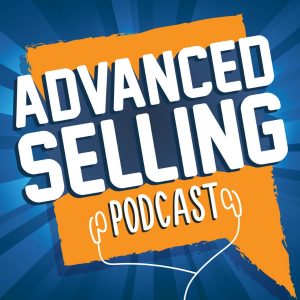
What is the Advanced Selling Podcast about?
The Advanced Selling Podcast is the longest-running sales podcast in podcast history with 13 million episode downloads.
Launched sixteen years ago, the podcast has recorded over 700 episodes. Each and every episode is designed to help salespeople succeed at their job.
Who are Bill Caskey and Bryan Neale, the hosts of the Advanced Selling Podcast?

Hosts Bill Caskey (left) and Bryan Neale (right)
Bill Caskey is a sales development leader and experimenter with over 30 years of experience in B2B sales. His philosophies and strategies have fueled explosive growth in sales and profits for his clients.
He is a professional speaker, trainer and coach and has interacted with thousands of leaders and teams over the course of his career.
Bill Caskey is the author of Same Game New Rules and the creator of the 2X Group and World Class Sales Leader Masterminds.
Bryan Neale is a trainer, coach and deal-work junkie. He has consulted with B2B sales teams, managers and CEOs for more than 20 years. He is known for helping his clients design sales strategies that work and have a huge impact on their revenue and goals.
Bryan is a veteran trainer and speaker working with sales teams of all sizes.
What will you learn by listening to the Advanced Selling Podcast?
Here are the latest questions and issues sales professionals can find answers to:
- How to properly frame your value
- Why sales professionals get their value statement wrong
- Three terrible ways to reach out to prospects
- How to design your own sales process
- What not to write in your sales pitch email (don’t say I’ve been chasing your business for 3 years)
- Where are your limiting beliefs holding you back from your success?
- How to ask for an answer from your prospect without seeming needy
- Sales is broken! Long live the new ways of selling!
- How important is the customer experience in sales?
- Gifting a prospect: sales gimmick or great move?
Looking for new strategies to skyrocket your sales?
Attend BRAND MINDS 2022 and learn the new rules of selling and influence from Sales Expert Daniel Pink!
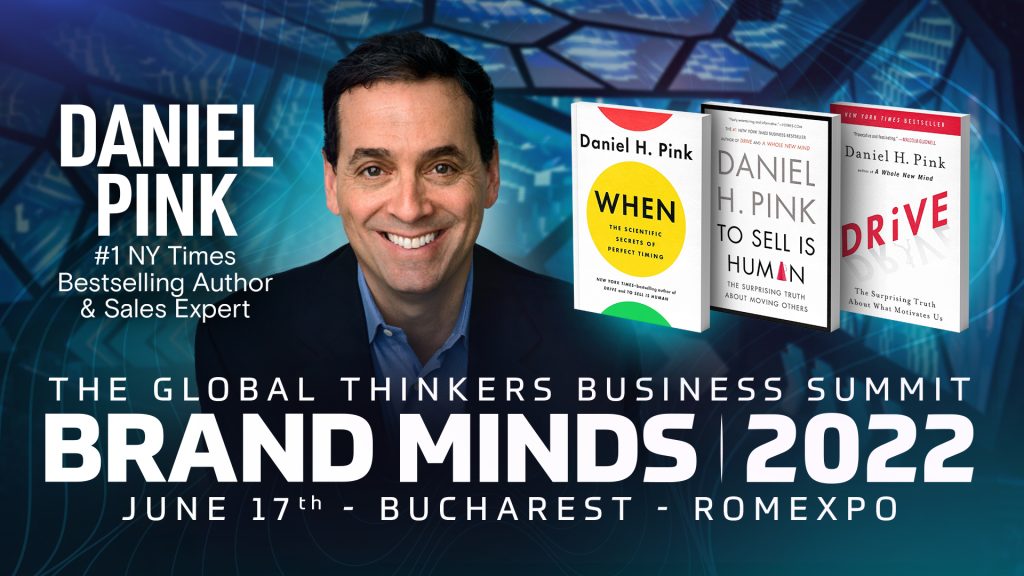
Use these 6 cognitive biases to boost your sales
Are you looking to boost your sales? Read on to discover 6 cognitive biases and how to apply them to increase your sales.
Cognitive bias #1 – The IKEA EFFECT bias
What is the IKEA effect bias?
The IKEA effect is a cognitive bias in which consumers place a disproportionately high value on products they partially created.
A 2011 study found that subjects were willing to pay 63% more for furniture they had assembled themselves, than for equivalent pre-assembled items.
The IKEA effect was identified and named by three researchers: Michael I. Norton of Harvard Business School, Daniel Mochon of Yale University, and BRAND MINDS 2022 speaker Dan Ariely of Duke University.
One factor the researchers found underlying the IKEA bias is that “self-assembly of products may allow people to both feel competent and display evidence of that competence.”
Also, the idea that they are “saving money by buying products that require some assembly” may make them feel like “smart shoppers.”
How to apply the IKEA effect bias
Placing a higher value on things we’ve built ourselves goes back to the time in the history of mankind when homo sapiens’ survival depended on eating what he had planted or hunted himself.
Today we feel the same. We find it hard to sell a house we’ve designed or built ourselves because it’s not just a house, it’s our house, and we’ve put a little piece of ourselves in it. It’s an emotional investment that tightens the connection to that particular product.
Take into account the IKEA effect bias when designing your product or service. Allow your prospects to contribute to the development of your product. They will feel more inclined to purchase it if they have already invested time in making it better.
Cognitive bias #2 – The LOSS AVERSION bias
What is the loss aversion bias?
Loss aversion is a cognitive bias that describes the tendency to prefer avoiding losses to acquiring equivalent gains. The principle is prominent in the domain of economics.
The term was coined by Nobel-winning economist Daniel Kahnemann in 1979 when he stated “Losses loom larger than gains”.
How to apply the loss aversion bias
We like to win, but as researchers discovered, losing delivers a stronger emotion than winning.
When we gain something, we perceive the win as “nice to have”. We were good before the win, we had balance, and we were whole. When we lose, we feel unbalanced, something that was part of us is now missing.
In sales, the loss aversion bias is about framing your product in an unexpected way.
Use the loss aversion bias to your advantage by stating what the prospect stands to lose if they don’t make the purchase. It’s powerful and it will surely get the attention of your prospect.
Cognitive bias #3 – The ZERO-RISK bias
What is the zero-risk bias?
Zero-risk bias is a tendency to prefer the complete elimination of one particular risk over options that could eliminate more risks overall.
The zero-risk bias is often attributed to a 1987 paper published by Kip Viscusi, Wesley Magat, and Joel Hubert.
Among its main findings is that when given a choice between reducing one risk from 5% to 0% or more risks from 55% to 50%, study participants went predominantly with the first choice.
How to apply the zero-risk bias
According to the zero-risk bias, we choose certainty over overall risk reduction. If we are presented with the opportunity to reduce one risk of many to zero, we will take it to the detriment of reducing more risks overall which is the logical choice or so it would seem.
When it comes to risk, we don’t want any and going for zero is the most appealing move we can make.
To benefit from the zero-risk bias approach, present your prospect with two choices. In the first choice, show how your product eliminates one of the prospect’s problems entirely while in the second choice, your product solves a number of your prospect’s pain points by a considerable margin.
Cognitive bias #4 – The FRAMING EFFECT bias
What is the framing effect bias?
The framing effect is a cognitive bias where people decide on options based on whether the information is presented from a positive view or a negative view; e.g. as loss or gain.
Which chocolate would you choose: the one that has 90% less sugar or the one that says Only 10% sugar?
As it turns out, although the information is the same in both versions of chocolate packaging (the amount of sugar is the same), people choose the chocolate presenting the higher benefit because 90% looks better than 10%.
How to apply the framing effect bias
The framing effect bias is about choosing which side of the coin to show: although they are parts of the same coin, they are different. One shows the face of a person, and the other shows a series of symbols.
Did you know that one of the recommendations for creating designs that persuade people to stop scrolling on social media is showing people’s faces? Because people are designed to look for other people.
So are prospects attracted to gains if you present them in the correct light? Let’s say you sell enterprise software. Your product is amazingly efficient: it reduces complaints by 95%.
How do you showcase this result to gain the prospect’s interest: 95% fewer complaints per month or 95% more satisfied customers per month? As per the framing effect bias, the latter choice is the right one.
Cognitive bias #5 – The CONTEXT EFFECT bias
What is the context effect bias?
The context effect is the aspect of cognitive psychology that describes how people are influenced by environmental factors when presented with a stimulus.
Weather affects people’s mood, mental health and behaviour. Do you feel a bit under the weather on rainy days?
That’s because the lack of sunshine causes your serotonin levels to dip. Increased temperatures can cause some people to feel restless and tired, one research has found, while cold weather prompts humans to increase their planning in cold regions and decrease planning in warm regions, per an interesting research report.
How to apply the context effect bias
To leverage the power of the context effect bias, present your offer at the best or most appropriate time, place or other contextual circumstances.
This means that you need to know your audience inside out, especially their behaviour patterns. When is the best time to present your offer? At what moment of the day should you showcase your product? When is your service most likely to grab the attention or interest of your prospects?
If it’s a delicious burger, run the ads around noon every day.
If it’s enterprise software for big corporations, reach out to the acquisition manager before the beginning of the fiscal year when companies prepare the annual budgets.
If you are Sheba, the well-known cat food brand, you know cat owners are usually woken up by their beloved felines around 4 a.m. to get food or attention after which they have a hard time getting back to sleep.
Knowing this very important insight into their customers’ behaviour, Sheba produced 4 a.m. stories, the most sleep-inducing film ever, per the brand’s own description.
This film is a video and audio masterpiece, with 8 million views on YouTube in the first four days of the campaign which ran at 4 a.m., obviously.
Cognitive bias #6 – The HUMOUR EFFECT bias
What is the humour effect bias?
The humour effect is a cognitive bias that causes people to remember information better when they perceive it as humorous.
Why is that? Because our brains are wired this way.
Neuroscience researchers found that humour activates the brain’s dopamine reward system stimulating goal-oriented motivation and long-term memory (source).
In student classrooms, laughter helps students learn and retain more information.
We basically remember things that make us laugh.
In conclusion: humour sales.
How to apply the humour effect bias
Yes, humour sales, but should every salesperson employ humour when pitching to a prospective customer?
The answer is: it depends.
Before putting a funny spin on your sales deck, you need to ask yourself these questions:
- Does the product I’m trying to sell allow for a humorous approach?
- Is the company’s brand archetype appropriate for using humour? Humour is not among the values of the rebellious independent outlaw while for the fun-loving and playful jester it very much is. Learn about the 12 brand archetypes in our Instagram carousels.
- Is your target audience more inclined to look for entertainment? Sure, we all welcome a good laugh but we’re not all the same. Brain study shows that teenagers have more dopamine receptors than adults.
Finally, if you have decided that humour is good for your sales pitch and appropriate for the brand you’re trying to sell, take into account these recommendations from stand-up comedian and salesman Jon Selig:
- Understand the prospect’s position, company, and needs;
- Connect your prospect’s biggest needs and issues with an idea that could be turned into humorous material;
- Find the common ground between you and your prospect;
- Keep it short and sweet: start with a joke, move on to the important content, and end with a laughing matter
create different types of material depending on the age, industry, and specialization of every prospect you speak with.
What Jon Selig is saying is funny salespeople are made, not born so you can become one with a little bit of work and practice.
Upgrade your sales strategy with Daniel Pink at BRAND MINDS 2022
We are thrilled to announce that Daniel Pink, #1 New York Times Bestselling Author and Sales Expert, is joining BRAND MINDS, The Global Thinkers Business Summit!

DANIEL PINK’S SPEECH AT BRAND MINDS:
To Sell Is Human: The New ABCs of Moving Others
In the classic movie Glengarry Glen Ross, Alec Baldwin tells a group of salesmen to abide by the A-B-C rule:
“A-Always, B-Be, C-Closing. Always be closing.”
Business and human behaviour researcher Daniel Pink says this steamroller approach has become a relic because sales has changed more in the last ten years than it did in the previous one hundred. Today, when buyers have just as much information as sellers—along with ample choices and the means to talk back—the rules have changed.
In his entertaining and provocative presentation at BRAND MINDS, Pink will draw on cutting-edge social science and best practices from organizations around the world to reveal the new A, B, Cs of selling:
A – Attunement (taking another perspective)
B – Buoyancy (staying afloat in an ocean of rejection)
C – Clarity (identifying hidden problems and making sense of murky situations).
WHAT YOU WILL LEARN FROM DANIEL PINK
- 5 ways to frame messages to increase clarity and lead to action;
- Why problem finding has become more important than problem-solving;
- Why questioning your abilities before a sales call is more effective than pumping yourself up;
- Why the most effective salespeople are not extroverts;
- 2 principles that can increase your sales exponentially.
GLOBAL EXPERT ON SELLING
Daniel Pink’s forward-thinking ideas and blockbuster books are reshaping how organizations approach motivation, timing and talent.
His work lives at the intersection of behavioural science, psychology and business.
His findings go against common beliefs, busting myths about motivation and selling techniques.
His insights help leaders boost team performance and teach team members how to upgrade their selling skills.
+20 YEARS OF RESEARCH ON HUMAN MOTIVATION
Drawing on his extended research, Pink exposes the mismatch between what science knows and what business does.
His insights are essential for sales professionals looking to upgrade their skills and techniques to close more leads.
His newsletter, The Pinkcast, is a rich source of science-based tools and tips for working smarter and living better.
More than 170,000 team leaders and sales professionals across the entire world receive the weekly Pink newsletter.
The newsletter includes a short How-to video and Daniel Pink’s thoughts about an idea that caught his attention and seemed worth sharing.
#1 New York Times Bestselling Author of To Sell is Human, When, Drive, and A Whole New Mind
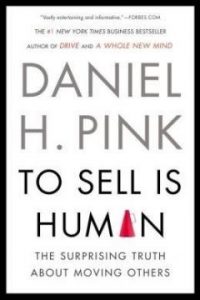
Daniel Pink is one of the best-selling authors of the last decade. His books on work, business, and behaviour have won multiple awards, been translated into 41 languages, and have sold more than 3 million copies worldwide.
To Sell Is Human: The Surprising Truth About Motivating Others offers a fresh look at the art and science of selling.
As was the case with Drive and When, in To sell is human Daniel Pink draws on a rich trove of social science to express his counterintuitive insights.
He argues that selling is not limited to salespersons; we are all in sales no matter what we do for a living. Replace selling with moving people and it’s now easy to understand Pink’s point of view.
To sell is human is a perceptive and practical book–one that will change how you see the world and transform what you do at work and at home.

His newest is When: The Scientific Secrets of Perfect Timing. The book was an amazing success and stayed four months on the New York Times bestseller list. It was also selected as an Amazon Best Book of 2018.
In his book, Daniel Pink unlocks the scientific secrets to how we can live richer, more engaged lives, at work and at home. The perfect combination of research, stories and practical application make When an easy yet important read.
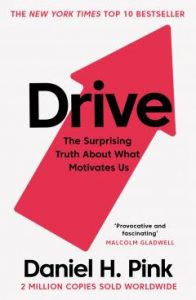
In Drive: The Surprising Truth About What Motivates Us, an Amazon.com and New York Times bestseller, Daniel Pink shatters everything you thought you knew about motivation.
Contrary to common belief, the best way to motivate people is not with the carrot-and-stick approach – money and punishment. That’s a mistake. Instead, what leaders should do to boost team performance and satisfaction is to allow them to take ownership of their own work, encourage team members to improve their skills and let them use those skills to achieve a greater purpose.
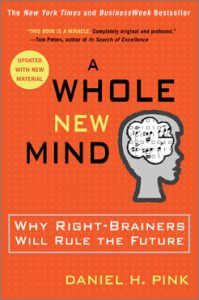
A Whole New Mind: Why Right-Brainers Will Rule the Future is a New York Times, Wall Street Journal, Washington Post and Businessweek Bestseller.
The book is an exciting and encouraging exploration of creativity in which the author shows that the future belongs to a different kind of person with a different kind of mind: artists, inventors, storytellers-creative and holistic “right-brain” thinkers.
Daniel Pink outlines the six fundamentally human abilities that are absolute essentials for professional success and personal fulfilment–and reveals how to master them.
What is Daniel Pink’s next book about?
Daniel Pink’s next book is called The Power of Regret and is set to launch in February 2022.
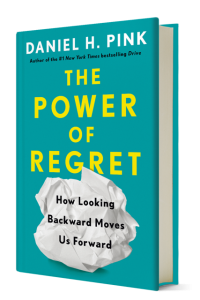
In his book, Pink draws on research in psychology, neuroscience, economics, and biology to challenge widely-held assumptions about emotions and behaviour.
Using the largest sampling of American attitudes about regret ever conducted as well as his own World Regret Survey—which has collected regrets from more than 16,000 people in 105 countries—he identifies the four core regrets that most people have.
Looking to close more sales?
BRAND MINDS is where sales professionals learn the new rules of selling.
Get tickets.

6 marketing goals you should set in 2021 to support your business vision
6 marketing goals you should set in 2021 to support your business vision
-
Increase brand awareness
-
Empower your email subscribers
-
Build brand ambassadors
-
Boost your sales through referral programs
-
Identify customer behaviour change
-
Increase website traffic with guest content
Let’s talk about each of them.
1. Increase brand awareness
If a stranger approached you in the street offering to be your friend would you accept? I can’t speak for you but I’m sure my answer would be I can’t be friends with someone I don’t know.
It’s the same with your brand: why do expect your customers to buy your products if they are not aware of your brand? That’s why brand awareness is an essential part of brand building. Brand awareness is a process leading to sales. The first stage of an effective sales funnel is awareness followed by interest, decision and action.
Brand awareness is also an ongoing process. Coca-Cola is the leading global soft drinks company and has been on the market for 128 years. You would be hard-pressed to find someone who hasn’t drunk a bottle of Coke in their life or is unable to recognize the brand’s iconic logo. This happens thanks to the company investing billions of dollars in campaigns. More precisely, $4 billion each year since 2015 to market its drinks to consumers around the world. If the company didn’t commit to this goal of maintaining and increasing brand awareness year after year, it would quickly lose the top spot and market share.
So how do you increase your brand’s awareness? It certainly helps to have a big budget but that’s not everything.
Let’s explore ways that you can increase awareness for your brand!
Share of voice
Marketing effectiveness expert Les Binet recommends that brands should run both sales activation and brand building campaigns but tweak the balance to 75% brand building and 25% activation.
Binet’s research found that sales activation delivers short-term sales volume while brand-building campaigns lead to long-term growth and higher sales volumes. Learn about brand awareness and why SOV (share of voice) is important for your brand (with examples).
Partnerships
As a business owner, you are competing with other businesses in your market for the attention of your customer base. What if you took a different approach and choose to build brand partnerships instead of competing with each other?
Here are 9 benefits of brand partnerships:
- Sharing customer bases;
- Break into new markets;
- Cross-selling;
- Expanding your customer base;
- Lead-generating opportunities;
- Brand strengths are amplified through collaboration;
- A great experience for the customers;
- Enhanced brand awareness and exposure.
If you decide that partnering is a good strategy for your company, there are factors you need to consider for a successful brand partnership before you draft your first contract.
Standing up for your brand’s values
Brands are no longer setting the pace for its consumers. In fact, it’s the other way around – consumers have the upper hand over brands.
Over the past few years, consumer behaviour reports have highlighted this fact: it’s important for consumers to see their favourite brands act on their beliefs and values.
A 2018 study from Shelton Group found that 86% of consumers want brands to take a stand on social issues and said they’d purchase a product because a company advocated for an issue they cared about.
There are many examples of big brands taking a stand on social issues and receiving praise from the public (Nike’s Dream Crazy, UK supermarket chain Iceland and its Say Hello to Rang-tan ad, Barbie’s Close the dream gap) while other brands are facing backlash for failing to engage with their customers’ needs and expectations and their outdated marketing (Victoria’s Secret).
2. Empower your email subscribers
Email marketing done right outperforms social media in terms of reach, CTR, conversion rate and ROI.
And by outperforming ROI I mean 42:1 which means for every dollar spent, your company’s return is 42 dollars.
To get this high of an ROI, you need to focus on the words done right.
First, make sure you don’t make these 5 email marketing mistakes and second, update your buyer’s persona especially at the pain points and dreams categories.
What stands between them and their goals? What are they dreaming to achieve? What do they need to meet their objectives? Find out what they need and give it to them.
Of course, your email marketing strategy should include sales-focused emails, but maintain a balance between promotional content and non-promotional content. If you don’t know what that balance is, you can start with the 80-20 rule of thumb: 20% sales content and 80% empowering content.
Once you have identified what empowering content looks like for your customers, invest your resources into designing the ways in which to deliver that content. Infographics, video, expert quotes, listicles, how-tos, links to in-depth articles etc.
Find a way in line with your brand goals to reward your most engaged subscribers.
Also, create the opportunity for your subscribers to get to know each other. The end objective of your email marketing strategy is to empower your subscribers individually and transform them into a community.
3. Build brand ambassadors
In 2018, marketing software provider Hubspot said goodbye to the marketing funnel and hello to the customer flywheel.
The shift happened when the company noticed that customers were purchasing HubSpot products after they have been recommended by their friends, already HubSpot customers.
The situation was that word of mouth was selling HubSpot products instead of the company’s marketing efforts.
The customer flywheel is not a funnel but a process where customers feed growth. The Customer Flywheel leverages the enthusiasm of existing customers and turns it into a driving force for attracting new customers.
What makes the flywheel spin faster and faster? Increased force and reduced friction. The more force with less friction applies to the flywheel, the faster it spins.
Once the flywheel gains momentum, it can spin forever with little effort from the company. Momentum comes from retaining customers and transforming them into brand ambassadors leading to increased customer retention and brand loyalty.
Learn more about improving customer retention and loyalty.
4. Boost your sales through referral programs
A referral program is a word-of-mouth marketing tactic that encourages customers to advocate on behalf of your brand.
The purpose of a referral program is to attract new leads. Compared to other lead generation tactics, the leads that referral programs generate are better because their profile is more likely to match that of your customers.
This means more qualified leads and less time and resources used by your company to nurture and engage them.
Referral programs have higher chances to succeed because they leverage the power of peer-to-peer marketing and one of Cialdini’s Principles of Influence: social proof. The social proof principle states that people will look to the actions of others to determine their own. Man is by nature a social animal: we are influenced by our environment and our friends.
Statistics support this: 90% of consumers trust peer recommendations and only 33% trust ads (Nielsen).
Here’s how to build a customer referral program.
5. Identify customer behaviour change
Thomas Cook was the world’s first travel agency, one of the leading companies in the leisure travel industry present in 17 countries, owned an airline and operated thousands of hotels around the world.
In 2019, Thomas Cook ceased its operations leaving around 600,000 tourists overseas including 150,000 British citizens. It was the UK’s biggest peacetime repatriation.
One of the reasons that led to Thomas Cook’s failure was this: the company missed the opportunity to include Millennials among its customers.
When Millennials entered the market, it was obvious that the market had to change. The Millennials would rather take more short trips i.e. city breaks throughout the year rather than one big vacation package. Also, Millennials behaved differently than their parents or grandparents in that they planned their own itineraries, used digital tools (like Airbnb or Booking.com), focused on transformational experiences and were influenced by social media or user-generated content (source).
The company failed to acknowledge this change in behaviour and adapt its offer to cater to the needs of this new type of customer. This and other factors contributed to the failure of Thomas Cook.
6. Increase website traffic with guest content
Does your company use social media as a marketing channel? I’m pretty sure the answer is yes.
According to the latest statistics, 77.6% of small businesses report using social media to promote their businesses.
What would your company do if Facebook, Instagram or YouTube suddenly disappeared?
That’s right, all your efforts would have been in vain. It’s not to say that you shouldn’t use any social media channels for your company. Only that you shouldn’t invest all your resources in them.
What you should do is invest a large portion of your resources into driving traffic to your website. Remember that social media platforms are rented space whereas your website is owned, you control what happens in your house.
To increase your website traffic consider featuring guest content on your company blog.
Guest content is a great way to expand your reach and increase brand awareness.
In order to achieve this goal, it’s essential that you choose the right contributing authors for your brand.
Whoever you choose, note that your brand will be associated with that particular contributor.
Make sure that your brand’s values are aligned with your contributor’s values.
And most importantly: the best guest content contributor is the one that your audience follows organically.
Join the Conversation
We’d love to hear what you have to say.
Get in touch with us on our LinkedIn Page, Facebook Page, Twitter or TikTok.
How to Use Chatbots to Increase Sales
Making a sale today means communicating with a very demanding and digitally savvy customer. Customers expect businesses to deliver tailored experiences and meet customers’ demands with the right information at the right moment, as this Google report states. We are living in an on-demand environment!
One business rule of thumb is to go where your customers are.
But where do customers go when they want to talk to each other?
Latest statistics may surprise you: they turn to messaging apps instead of email, sms or phone.
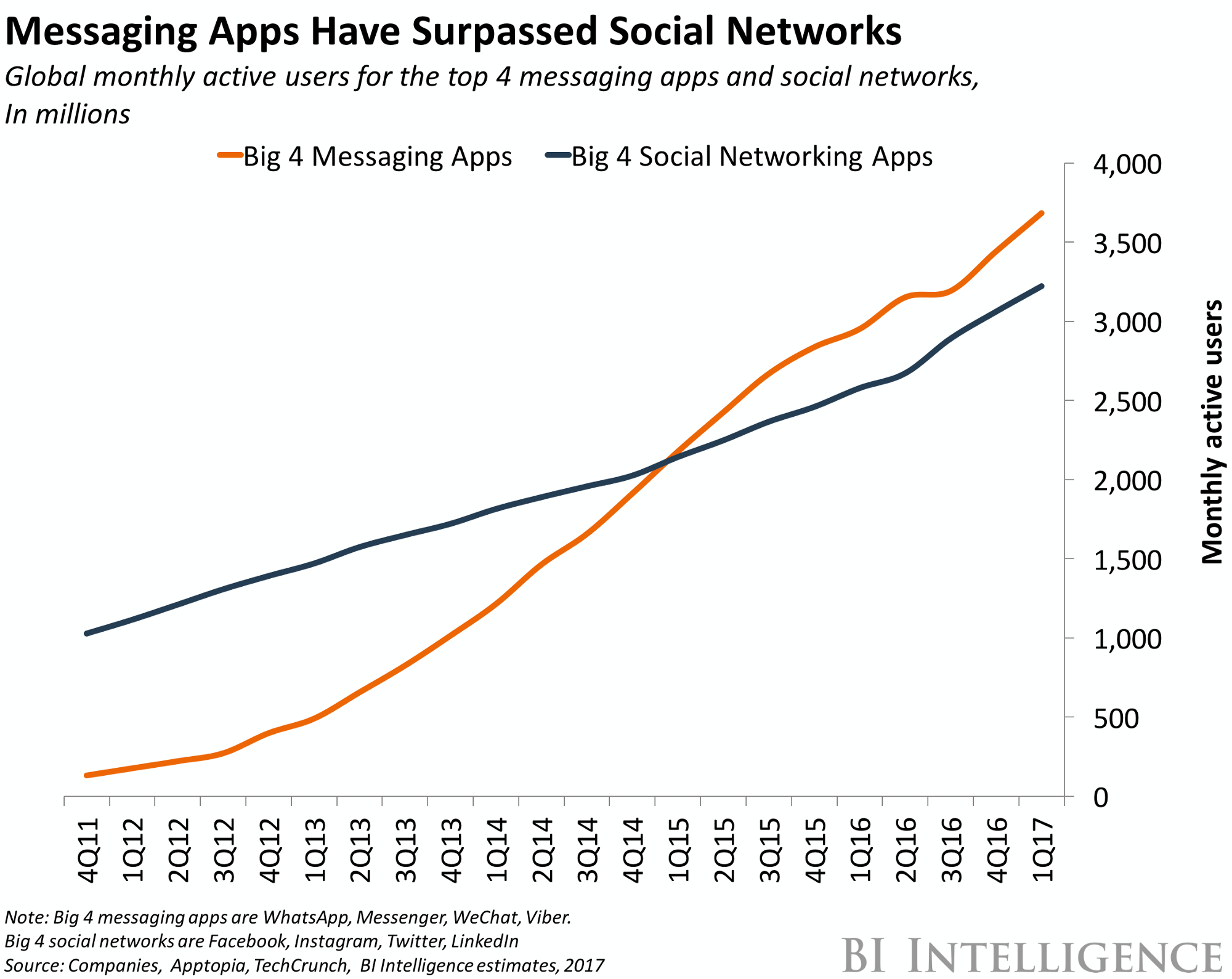
image source: BI Intelligence
This article will help you understand more about chatbots, how to use them to increase sales and discover 3 examples of brands using chatbots.
Chatbots – what are they?
Chatbots are bots that businesses can program to achieve various objectives. Chatbots are software that interacts with users, answers queries, manages particular requests etc. Chatbots are powered by AI and NLP technology which allows chatbots to talk to the user in a conversational format. Also chatbots can assist the user with graphics like images, buttons, menus etc.
The 2016 Facebook Insights Report reveals 5 very interesting statistics regarding customer behaviour:
- Over 1 billion people use Messenger to connect with businesses every month;
- 63% of business owners said messaging from customers has increased over the past 2 years;
- 56% of customers would rather message a business than call for customer service;
- 61% of customers like personalized messages from businesses;
- 47% of shoppers are open to buying items from a bot.
As the percentages mentioned above show, communication has moved to messaging apps. From a sales perspective, talking to a person is a great way to gather information about your business’s buyer persona, his or her interests and likes, where this person is in your company’s sales funnel.
Your customer service executives can handle a few dozen of customers’ inquiries a day during business hours. But can they accommodate a few hundred a day? How about answering messages outside the 9-5 program or during the weekend?
That’s why chatbots can become a very powerful and useful tool for businesses.
Chatbots – what can they actually do?
Chatbots have become increasingly important as brands are using messaging applications to reach consumers.
Here is what businesses can use chatbots for:
- 24/7 customer support;
- Keep track of your store’s inventory;
- Inform customers when a product they were searching for is back in store;
- Assist with managing your online store;
- Collect customer data: interests, previous purchases, searching history etc;
- Help identify qualified and unqualified leads;
- Send marketing or informational materials;
- Help move leads through the sales funnel.
How can your business grow by using chatbots?
Chatbots are revolutionizing the customer experience and helping businesses achieve marketing and sales objectives at a lower cost than traditional advertising.
Your business can benefit from using chatbots as follows:
- Lead generation & collection
A study conducted by Sprout Social found that brands ignore almost 89% of messages that require a response; the consumers expect a reply within four hours, but they receive it after a 10-hour wait. Enough to make them lose interest and turn to other brands.
- Retargeting for each step of your sales funnel
Chatbots store a buyer’s history; this means that whenever that particular buyer visits the store again, the chatbot can suggest products with the caption “You may also like this”.
- Product recommendations
Is your business using email messages to upsell and cross-sell? You may want to switch to messaging apps instead of email as a tool for delivering your messages.
HubSpot made an experiment to find out which tool was better for their business: Facebook Messenger or the good-old email?
What they found was really surprising: the message delivered through Messenger had an average open rate of 80% and an average click-through rate of 13%!

hubspot.com
3 examples of brands using chatbots
My Starbucks barista:
- Order your coffee by text or voice;
- The chatbot tells you how much your coffee costs and when it is ready.
Mastercard Facebook Messenger:
- Can help the user break their expenses on categories (how much the user spent on coffee for example), stores (McDonalds’s, Starbucks etc.), cities etc.
- The user can setup alerts;
- The user can instruct the chatbot to make payments.
Color Match for Sephora Virtual Artist via Facebook Messenger:
- The bot helps users match their lipstick shade to outfits;
- The user sends her selfie photo and try on any lipstick in Sephora store;
- The user can browse products in Sephora store and make purchases inside the bot app.
Benefits of using chatbots for your business:
- Improve conversion rates;
- Increase open rates and click-through rates;
- Decrease cart abandonment;
- Increase customer satisfaction;
- Boost traffic and sales;
- Optimize buyer personas;
- Efficiently push customers down the sales funnel;
- Drive brand awareness.
Expert’s statement
We asked Vlad Mustiata (CEO & Founder) and Madalin Preda (CMO & Founder) at DEQOD & ChatX:
Are chatbots “absolutely necessary” or “we can do without”?
This is what they told us:
As chatbots developers, we truly believe that they will have a big impact in the future, maybe even bigger than the smartphone. All the industry is looking forward for the first chatbot or virtual assistant that will be used by people on a daily basis, but that requires two things:1. Further development of the technology (Natural Language Processing / Natural Language Understanding, Voice Recognition, Sentiment analysis )and2. Finding use-cases where chatbots can provide a better User Experience than what a Mobile App or Website can offer now.If you want to be one step ahead of the competition, we recommend to start using chatbots as one of your ‘pocket aces’.
B2B selling: How to close sales deals with value selling
If you’re in B2B selling and wish to close sales deals, you need to understand how to sell on value, not on price.
Value selling is certainly not a new concept but implementing it as a sales methodology is still a challenge for companies and organisations that sell their products or services to other companies.
What value selling is NOT
Before discovering what value selling is, let’s see what value selling is not.
Tom Reilly says that value selling is challenging, but not impossible. Discounters shops and powerful chain stores have transformed the word value to a euphemism for cheap.
What value selling is not according to Tom Reilly:
- Value is not bloated, feature-rich products;
- Value is not layers of services that a company offers;
- Value is not a cheap price.
What IS value selling?
In order to increase sales, Brian Tracy, the Sales Guru encourages sales professionals to show their prospects that the value of their products is greater than their asking price.
Selling value instead of selling based on price is also a great method to acquire high-quality customers that are less likely to dump your company the second a better deal presents itself.
Sales professionals should help their prospects overcome two obstacles: fear of change and fear of being cheated. The best way of achieving this goal is by showing their prospects why their products cost what they do and how their products will be a positive change in customer’s life.
Value selling says that customers buy your value or service because they anticipate enjoying a value that they would not have in the absence of your product or service. People don’t buy products, they buy the results the product will give them.
Brian Tracy
Sales experts have defined value selling as follows:
- An outcome;
- The result of your solution;
- Return on investment;
- The impact of your solution on the customer’s world.
Value vs. Price
If sales professionals want to be successful, they must change their perspective on price and see it as part of the product, as one of product’s features – like size, colour, packaging etc.
Why allow yourself to have a sale derailed over a product feature when the real issue is value?
Tom Reilly
If value selling is an outcome, price affects it no more or less than any other product feature. The value of something is determined by what customers sacrifice measured against the outcome of the solution. Sacrifice includes price and ownership costs. Outcome includes what the solution does and how it affects the customer. If the outcome of the decision is greater than the sacrifice, it is great value. If the sacrifice is greater than the outcome, it is lousy value.
Price is a piece of the sacrifice, not the whole of it. At the heart of buying decisions, customers want great value, not just cheap prices.
Tom Reilly
Grant Cardone, international sales training expert and speaker at Brand Minds 2019 notes the following:
using price as your tool is an indication that you need to get back to developing what makes your company a unique proposition.
So if your sales strategy is to rely on your price, you should know that this strategy wouldn’t close the deal. Why? Because there is always a cheaper product or service on the market. Grant Cardone recommends that you spend time determining where you can deliver value that is greater than the price.
Remember, price is a myth. While the buyer may shop the lowest price, it is value that they really want, even during tough economic times. People buy products and services that solve problems. {.} When value exceeds price, price is no longer the issue.
Grant Cardone
Feature selling – Benefit selling – Value selling
To further understand value selling for B2B companies, you need to compare it with two other selling methodologies: feature selling and benefit selling.
Feature selling-Benefit selling
Feature selling means selling a product by describing a physical feature that might appeal to the customer.
Selling a product by its benefits is tied to the feature selling. The salesperson starts by talking about the features of the product and then takes it a step further and shows the customer how this particular feature improves his condition.
Here is a great example:
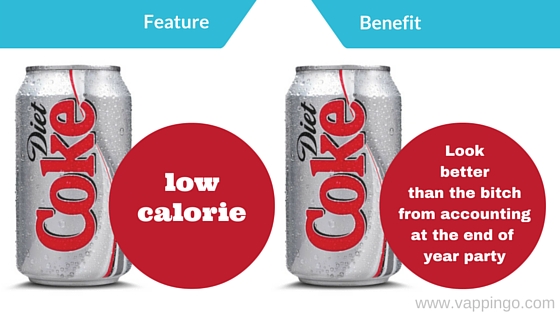
Value selling for B2B companies
Emotional triggering may work for a B2C selling strategy, but when you are in front of the purchasing manager of a prospect company, you are not selling the result of being more beautiful or skinnier.
The purchasing manager is meeting with you because his job is to seek reliable vendors or suppliers to provide products or services that will help his company achieve its business objectives. Your job as a salesman is to help him understand how your product supports his company achieve that. Value selling is the best sales methodology to help you close the deal.
Let’s take the following example:
You have to sell your company’s CRM software system to a communication company.
You start by describing your product’s features and benefits then you deliver your most important piece of information:
In the past year, your company acquired $1 million worth of customer surveys. Because our CRM software has a powerful survey-focused feature, buying it would mean a $1 million cost reduction for your company. How would you use this money?
In other words:
In B2B is not about ”Show me your smile!”. It is about ”Show me the money” and ”Show me the smile of my clients!”
That means you have to be able to mathematically demonstrate two things:
1. How your product will increase your client’s profitability by increasing his income or decreasing his costs,
and
2. How the clients of your client will be happier if he uses your product in his business model.
Bogdan Comanescu, sales expert
Conclusion
Know your product’s features.
Know your product’s benefits.
Know your customer’s business very well.
Know the financial impact your product has on your customer’s business.
Color Psychology in Marketing and Its Importance in Driving Sales
Research shows that the proper use of color increases brand recognition by 80%. It also raises the visual appearance by 93%. A further 85% of consumers buy because of color.
In the case of affordability, the visual appeal of an item is the major influence on a consumer’s buying decision. “In fact, the color, make, look and feel of a product affects 93% of the buying decision. This is followed by texture which affects 6% of the buying decision and sounds and smell which affect 1% of the buying decision. Once a consumer starts walking towards an item that has his or her favorite color, the major part of the purchasing decision has already been made. When the four: color, design/texture, and smell are combined, the buying decision becomes powerful,” wrote colorpsychology.org.
Color psychology is an area of research that looks at how color influences our behavior and decision-making. When used in marketing, for example, different colors can impact the way buyers perceive a brand in ways that aren’t always apparent, such as how certain hues can increase appetite.

4 top rules to increase your sales
Color is too dependent on personal experiences to be universally translated to specific feelings. There are, however, broader messaging patterns to be found in color perceptions.
In a study titled “Impact of color on marketing,” researchers found that up to 90% of snap judgments made about products can be based on color alone, depending on the product. Regarding the role that color plays in branding, results from another study show that the relationship between brands and color hinges on the perceived appropriateness of the color being used for the particular brand (does the color “fit” what is being sold?).
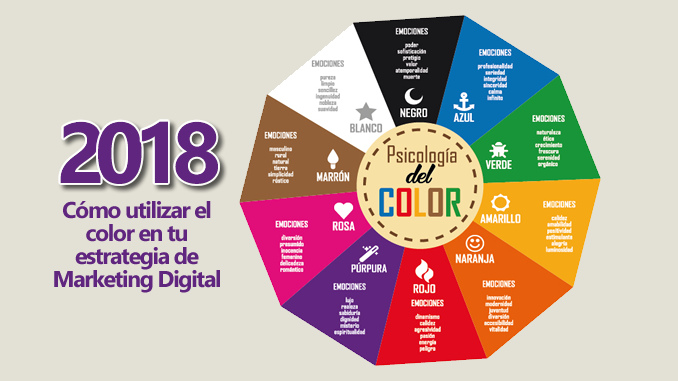
source: Marketing Digital Blog
The study Exciting Red and Competent Blue also confirms that purchasing intent is greatly affected by colors due to the impact they have on how a brand is perceived. This means that colors influence how consumers view the “personality” of the brand in question.
When it comes to picking the “right” color, research has found that predicting consumer reaction to color appropriateness in relation to the product is far more important than the individual color itself.
Psychologist and Stanford professor Jennifer Aaker found in her study “Dimensions of Brand Personality” that there are five core dimensions that play a role in a brand’s personality: sincerity, excitement, competence, sophistication and ruggedness.
“Brands can sometimes cross between two traits, but they are mostly dominated by one. While certain colors do broadly align with specific traits (e.g., brown with ruggedness, purple with sophistication, and red with excitement), nearly every academic study on colors and branding will tell you that it’s far more important for colors to support the personality you want to portray instead of trying to align with stereotypical color associations,” wrote helpscout.net.
At the same time there are difference between how men and women perceive them. Additional research in studies on color perception and color preferences show that when it comes to shades, tints and hues men seem to prefer bold colors while women prefer softer colors. Also, men were more likely to select shades of colors as their favorites (colors with black added), whereas women were more receptive to tints of colors (colors with white added).
More pieces of information on the subjects you can find here and here.
Top 10 Mistakes Marketers Make When Hiring Agencies
-
- Not choosing the right time to outsource. Timing is essential,just like every other business decision one makes. It has to be chosen carefully and with a lot of attention. When confronted with the idea of outsourcing a service or some competencies, the company’s representative must take in account first if its the right time to make that certain decision at that time,for the company, and, at the same time, what concluded to that decision.
2. Spending too much time deciding if to make the move or not. While it is very important to make sure the timing is right spending too much time going back and forth on the decision wouldn’t do you any good. You must be decisive and confident on your choices.
3. Outsourcing the wrong activity / activities. If you hire someone outside of the office, you should give them the things they can do best. Always choose the best specialists or companies you can afford. Creating a company brand and marketing goals should be done inside your office, so make sure you discuss your culture code, style and requirements with the outsourced marketing partners before kicking off the project.
4. Having unrealistic ROI expectations. When you entrust the marketing or communication activities of your company, you should set some realistic expectations. One of the biggest mistakes of many companies is that they think outsourcing all their problems will solve them at once and there will be no need for them to participate in marketing decisions, activities and so on. Do not forget that brand awareness, a firm customer base and long-term faithful relationship with customers take time. Results don’t appear over night,it takes a lot of effort both at an external,but also internal level to reach your goals.
5. Forgetting that PR doesn’t sell per se. When looking for a PR partner outside your company make sure you first of all understand that PR doesn’t equal immediate sales. And no professional PR specialist will promise you that. That being said, a successful PR strategy will definitely affect your sales success indirectly through 3 factors: brand awareness & recall, credibility, as a secret marketing weapon.
6. Not doing the right research before the pitch. One of the most important steps is doing your research about the agencies you are interested in. A simple Google /Linkedin / Facebook search will not help you in taking the best decision of which agencies to call on the pitch or for a presentation. Instead try looking at their portfolio, at the case studies, at the awards the won, the services they provide, etc. Talk to their current clients. Read their reviews and their blog. See if the media was interested in them or not. Does their language vibe with you? Do their clients remind you of your company? Do they have documented results similar to the ones you want?

7. Asking more than 5 agencies in the pitch /presentation. If you know what you want from your agency, and you should, you don’t need more than 5 agencies briefed. You save both their time and yours and you are closer to choosing the right partner for your business. A good research will help you make the right choices.
8. Falling for shiny presentations. Make sure the very creative and crazy ideas presented to you, as beautiful and as interesting as they may sound or look like, are backed up by facts. The company or specialist you are hiring must be able to create and implement what presented to you. And most of all, bring results.
9. Letting the price be the main criteria. Choosing the most expensive agency doesn’t guarantee you the best results, but basing your decision firstly on the amount of money you pay for the collaboration will prove to be a bad call. Cheap will be cheap no matter how you look around it.
10. Not listening to your gut feeling. After years and years of experience, the instinct is very good and calibrated. We believe is very important to always have it with you and use it,when necessary.
5 pieces of advice for entrepreneurs in 2018, the media agency point of view
Having the right media mix and campaigns represents a very important moment in a company’s marketing strategy. Choosing the right track might be hard to find, therefore every business needs a good media consultant. A point of view written by Razvan Varabiescu – CEO Dentsu Aegis Network Romania.

- Disrupt Or You Will Be Disrupted.
In a digital economy you have to look at things as a start up or as a business turnaround. If in the past because of the volume of media budgets one could afford to “ignore” the small competitors who due to the financial entry barrier did not afford big reach on TV or other kind of exposures, today, regardless if you are a startup or a 20-year market leader, one can not ignore the new environments, the opportunities that appear, you have to be forever ready to disrupt and to think things like a start up.
- Content Is King
Today, the consumer has an overwhelming number of options on how to consume media. Whether we are talking about digital radio or analogue TV or live vs. registered by Netflix, Amazon Prime, HBO Go, YouTube etc., it is very important to integrate the product into the content. The environments are evolving and it is increasingly difficult to predict where and how consumers consume media. However, it is certain that the relevant content for them is different, so the big players continue to invest permanently in premium and unique content. The more we manage to integrate the media into the content, the more we make sure that we will not be ignored.
- Data Is The New Currency
Everybody talks about our data. However, data collection is still at the beginning. 92% of the data we have today is gathered over the past 2 years and probably the trend will continue. It is still not too late to collect data on our consumers. Why? This is simple: in the future when all the media acquisition is done programmatically, the data we have will make the difference. Imagine a world where the cost per thousand is given by supply and demand, the difference being made by how many consumers I need to reach to meet my marketing goals, sales, etc.; the most effective campaign will be the one that achieves its goals by reaching as few people as possible by getting in contact with those who are willing to act. But how do we figure out who they are? Using the data, obviously.
- Strategic Thinking At The Core
As media moves towards programmatic, the price pressure will drop and a relevant and different strategy will make a difference. If in the past we were all strategists and we had strategies for media, PR, BTL, communication, marketing, etc. all today’s touchpoints are interconnected and need to have a single strategy able to deliver in all communication disciplines. We cannot have a TV campaign anymore and pray that someone writes a post on a blog about the product, we cannot pay 2 bloggers hoping to get the story. Things must be thought from the beginning, interconnected, measured. The strategy will make the difference exactly as low prices on TV was the law.
- Attract The Right Talents
This is probably another cliché. But we have to realize that the Y generation is the generation that will provide the main workforce for the next 20 years. 54% of companies will work with online workforce over the next 5 years. It’s the savvy digital generation. Every hour a car replaces the work of a man. The main problem we have in the coming years is to succeed in attracting and securing talent in the organization. For this, every manager should ask himself how can he change organizational culture to adapt to the new needs of the millennial generation. Let’s not forget we’re talking about a sensitive generation called the Snowflake Generation.
All you need to know about autoplay video in Pinterest ads
Pinterest’s Promoted Video ad units, introduced on August 2016, went on auto-play in 2017. The new type of Promoted Video begins playing as soon as users scroll across it in their feeds, and these ad units will also auto-play in Pinterest’s search results.
“Pinterest has had to make the argument to advertisers that its 175 million users behave differently on Pinterest when compared to Facebook and Google, or even Twitter and Snap. Pinterest users come to the site and dig through products and recipes, among other things, for ideas. They then search deeper into topics, save them, and then eventually in theory acting on them later — either by cooking the dish or buying a product. Pinterest’s pitch is that unlike Facebook and Google, which can offer a compelling ad product for one point of that part of a customer’s buying life, it can offer products across the whole timeline,” wrote TechCrunch.
Moreover, said AdWeek, “Pinterest announced that Nielsen Mobile Digital Ad Ratings will measure audience reach of campaigns using Promoted Video with auto-play, while Moat will provide data on viewability, or how much of the videos were in view. They join existing measurement partners Millward Brown for brand lift and Oracle Data Cloud to measure the impact on offline sales”.
According to Pinterest’s Business page, Promoted Video delivers dramatic results, including lifts in brand awareness and favorability. Plus, using Promoted Video to show your ideas in action produces big gains in intent to act. “With 80% of Pinners using mobile devices to access our platform, it pays to use Promoted Videos, a naturally engaging format that can quickly capture the interest of this on-the-move audience,” concludes the post.
- Not choosing the right time to outsource. Timing is essential,just like every other business decision one makes. It has to be chosen carefully and with a lot of attention. When confronted with the idea of outsourcing a service or some competencies, the company’s representative must take in account first if its the right time to make that certain decision at that time,for the company, and, at the same time, what concluded to that decision.
